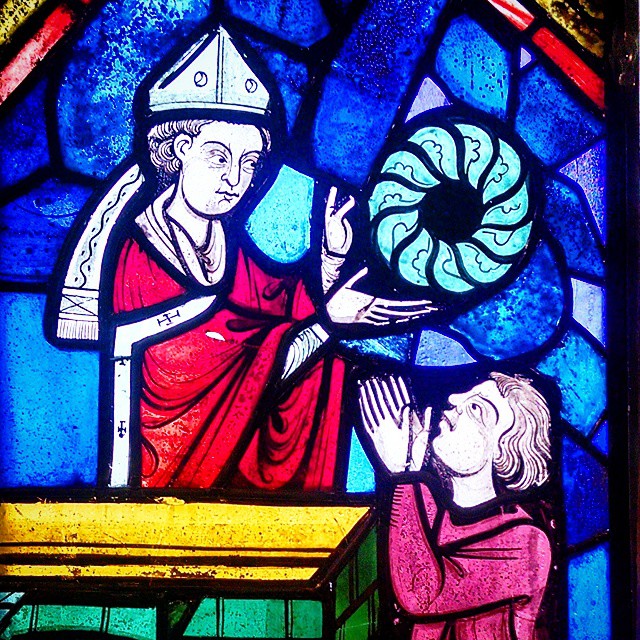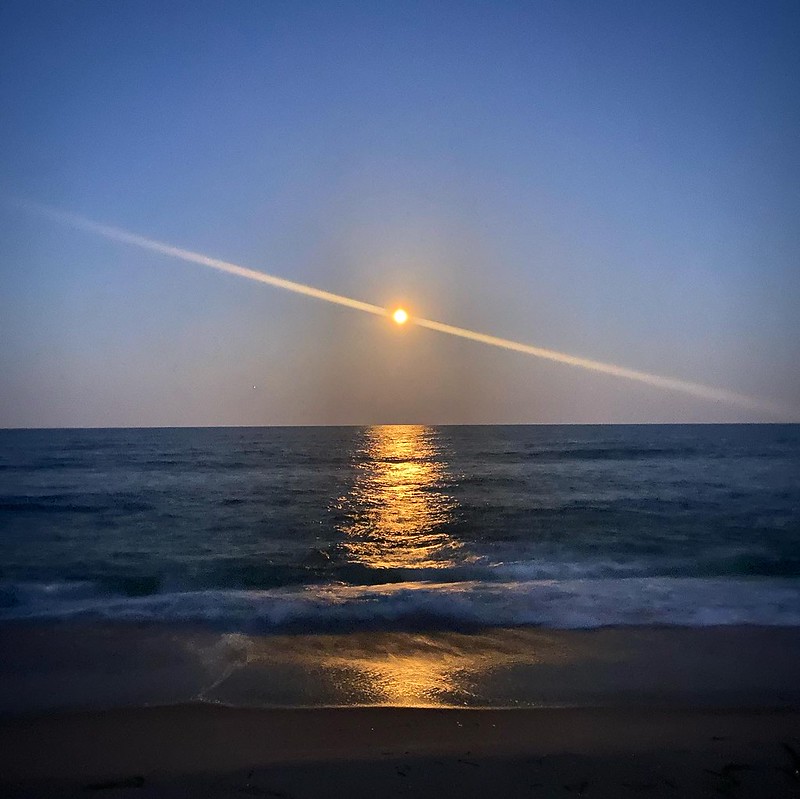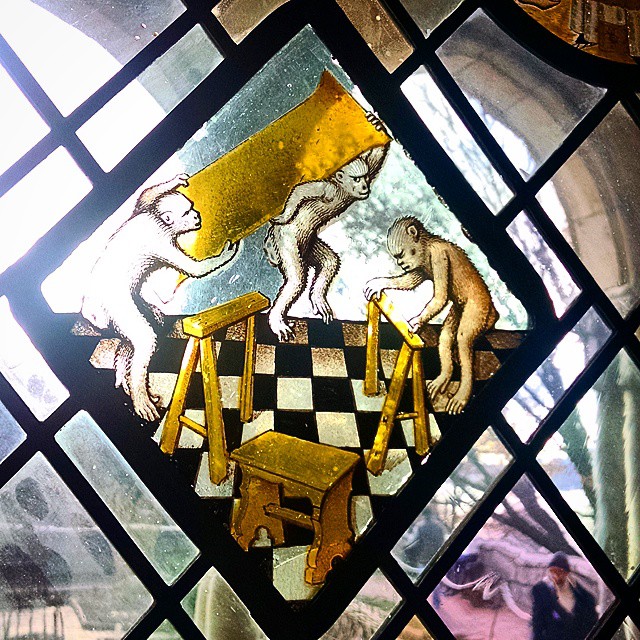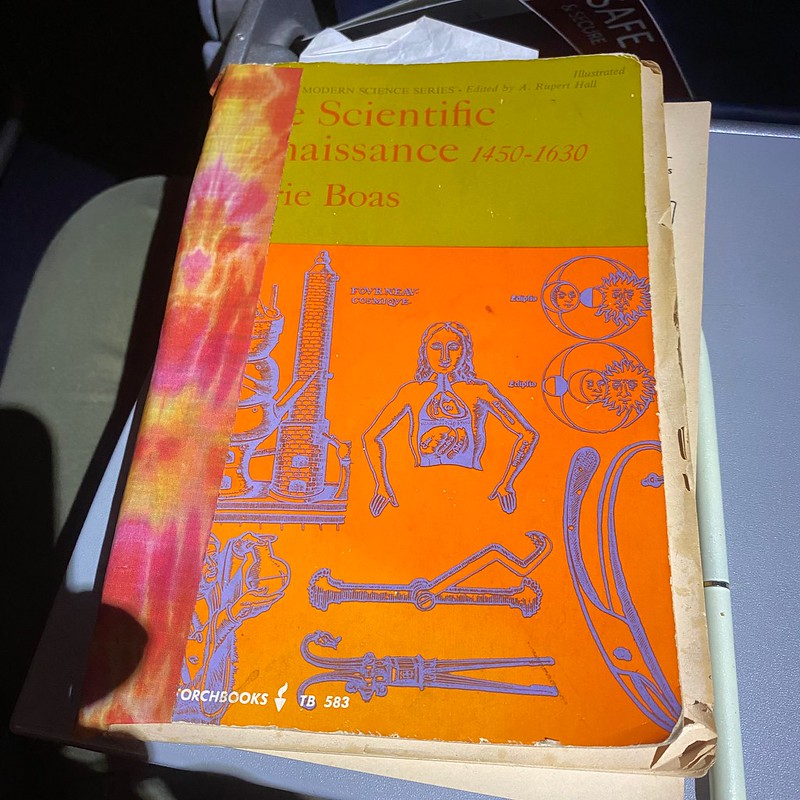 In the early 15th century, Europeans entered in a new era,
one liberated from the medieval culture of the past.
With the newly invented compass, they could sail the seas into
new parts of the world, and with the printing press, they could
spread the works of Greek scholars, thanks to the transcriptive work of
the Humanists.
In the early 15th century, Europeans entered in a new era,
one liberated from the medieval culture of the past.
With the newly invented compass, they could sail the seas into
new parts of the world, and with the printing press, they could
spread the works of Greek scholars, thanks to the transcriptive work of
the Humanists.
The Humanists of that day were obsessed with restoring, editing and evaluating ancient Greek texts. They rebelled against mediaeval schooling, which hammered on logic and theology, as it was shaped by Aristotle. They wanted to return to even older Platonic ideas.
“The fifteenth century scientist cheerfully submitted to the rigidity of an intellectual approach which was rooted in the worship of the remote past, and thereby strangely prepared the way for a genuinely novel form of thought about nature in the generation to follow,” wrote Maria Boas in "The Scientific Renaissance 1450-1630."
"The Scientific Renaissance 1450-1630"
By Maria Boas, 1962
"The Scientific Renaissance 1450-1630" is fascinating story of a people groping their way towards the scientific thinking. Of course, the Greeks and the Romans had excelled in this practice, with Plato, Archimedes and others, centuries before. But their work was all but lost in the Middle Ages, except, perhaps, for a slavish adoration to all the work of Aristotle.
In the early 15th century, however, Europeans entered in a new era. The brightest of the humanists went beyond merely transcription and started verifying how much of what of the Greek scholars wrote was actually true. Thus we came by the great advancements of in medicine, physics and, especially, astronomy in this time. And a s people grew aware of the power of the scientific method, many also found an interest in quasi- or pseudo-scientific practices of alchemy and astrology.
With humanism, the highest mark of honor was in producing a “creditable Latin” translation of a Greek work, usually of medical or scientific sort.
They fretted over the correct meaning, examining the original texts of a Galen or Euclid that may have been obscured by subsequent translations, often Arabic.
This work proved to be groundbreaking. For it led to serious contemplating of what were actually were saying, and how much of it was true. In effect, these evaluations were the seeds of original thought.
"The Humanists' role had important consequences both for what was available and how it was studied," Boas wrote.
The Humanists themselves believed that “modern man could not hope to do more than know as much as the ancients had known,” Boas wrote. But others moved ahead anyway.
“Endeavoring to see in nature what Greek writers had declared to be there, European scientists slowly came to see what really was there,” Boas wrote.
![]()

The most prominent individual working on these lines was, of course, Copernicus, who in the 16th century literally changed how people saw everything around them.
Before Copernicus, everyone assumed the earth stood still. They created ever-more elaborated theories about why the stars and planets swirled around the earth the way they did.
It was Copernicus who first suggested that it would be a lot easier if we just thought that the earth was just one part of the universe, rather being the center of it.
“Copernicus was only following humanist precepts: he was trying to replace Aristotelian authority,” Boas argued.
Copernicus knew that this idea, though simple in scope, would lead to a lot of grief for him. So much so that he delayed the printing of his “De revolutionibus orbium coelestium libri vi” (“Six Books Concerning the Revolutions of the Heavenly Orbs”) for decades.
Not only would make fools of the astronomy community, but more than one religion would see how it would make their own Biblical works, with the earth firmly set at the center of things, look stupid as well.
Following Aristotle’s lead, people assumed our planet was the center of the universe. Ergo, weighty things fell to the earth because the earth was the center of everything. The senses confirmed it so. The earth itself was so large and heavy, how could it move anywhere?
"To call the Earth small, even relatively, required a leaping imagination tht others could not encompass as readily as Copernicus did," Boas wrote.

After all, if all the planets moved across the sky at a fixed radii a constant distance from their center of gravity, why did some planets — Mars, Mercury — appear to backtrack for brief periods of time as they traveled through the sky on successive nights (“Retrograde”)? And where did Comets fit in?
Copernicus' heliocentric model of the universe solved many of these issues. Using Pythagorean mathematics describing spherical moving globes, his approach provided a reliable way to calculate the distances of the planets from the sun, in ways that his predecessor's, Ptolemy, fell short.
“By denying one essential difference between the heavenly and terrestrial spheres, Copernicus began that encroachment on cosmical dualism that was destined to end fatally,” Boas wrote. “Once astronomers began to consider heavens and Earth as one, there was logically a need to treat their dynamical problems as one.”
![]()
Quotes and Notes

“Scientists were, in this period, very ready to learn from craftsmen; having learned what the craftsmen could teach them, they naturally became convinced that they had much to teach him return. They were constantly disappointed to find this more difficult, when the craftsman failed to show himself eager to be taught.”
"By some perversity of intellectual development, countries like England and spain, previously backward in cultural and especially scientific advances, were quick to notice the new astronomical advances."
"Until the end of the 16th century, the Catholic Church had generally ignored the heretical implications of Copernicanism, and been satisfied to treat it as a mere mathematical hypothesis, useful for calculation, as in the case of the reform of the calendar so successfully carried out through 1852."
"Protestants, especially Lutherans, had been quicker to condemn Copernicanism; they did not see it as an astronomical hypothesis[...] but as a system fatal to the truth of the Bible."
"The Catholic attack was fiercest when, for the first time, it began to appear that there might be physical, as well as mathematical and aesthetic grounds for adopting the heliostatic system."
"There had been no great discoveries to render the Copernican system one bit more probable than it had been in 1543"--on comparing its greater acceptance after 1600.
"Copernicanism had been so thoroughly debated and so widely discussed that even laymen knew the arguments for and against it."
Andreas Vesalius, author of influential 1543 treatise "On The Fabric of the Human Body" thought that "a revival of anatomy was a necessary preliminary to the improvement of medicine."
Both Vesalius and Copernicus had the "desire to raise modern science at least to the level of ancient science."
"Progress is anatomy before the sixteenth century is as mysteriously slow as its development after 1500 is startingly rapid."
The Church issued an edict in 1300 that forbid the boiling up of bodies to produce skeletons.
One reason for the scarcity of anatomy at the time was that there was no guide. The anatomical treatises of Galen (b. 129 AD) were not translated early on.
Instead, doctors relied on "Anatomy," by Mondino de' Luzzi, written in 1316.
"Mondino's attention does not seem to have been to write a detailed textbook, but rather to provide a rough outline of procedure for dissectors."
"The printing press helped establish Mondino's as the official text."
"Just as fifteenth-century astronomy rebelled against mediaeval texts and tried to return to the pure fount of Greek tradition with an intensive study of the works of Ptolemy, so in anatomy and medicine there was an attempt to restore medicine by a reconsideration of the works of Galen."
"When one considers both the novelty and the intrinsic value of the Galenic texts, it is not surprising that sixteenth-century anatomists eagerly seized upon them, at the same time denouncing the established tradition of the medical schools, and those in particular who claimed that Mondino and his fifteenth and sixteenth commentators were preferable to Galen."
 "After the bones, Galen proceeded to the study of the muscles of the arms,
hands and legs, followed by the nerves, veins and arteries of the same limbs;
then the muscles of the head. Only then did he proceed to the internal organs of the
body, which he classified by function -- alimentary, respiratory (Including
the heart) and the brain. This is a totally different method of procedure
from that of Mondino, both in the order in which the organs are treated
and the manner in which they are discussed."
"After the bones, Galen proceeded to the study of the muscles of the arms,
hands and legs, followed by the nerves, veins and arteries of the same limbs;
then the muscles of the head. Only then did he proceed to the internal organs of the
body, which he classified by function -- alimentary, respiratory (Including
the heart) and the brain. This is a totally different method of procedure
from that of Mondino, both in the order in which the organs are treated
and the manner in which they are discussed."
"artistic circles were influencing anatomy in quite a different way." i.e. Leonardo da Vinci (1452-1519). da Vinci taught pupils "to observe surface anatomy, and also had them study flayed bodies, so they could learn enough about the play of muscles to represent them accurately in action."
da Vinci studied Galen's "On The Use of Parts," which stimulated him to further studies on bones and muscles, taught him much about anatomical fact and procedure, interested him in physiological functioning. (He is often as scathing about the statements of Mondino as any medical humanist."
"with the advantage of an eye trained to observation he saw as clearly as any professional anatomist the correct relationships and forms of bones, muscles and organs."
"most surgeons went on to serve in war, and the battlefield proved an even better school than the hospital for training distinguished men."
Oceanic navigation was "facilitated by the invention of the 'log' for measuring the ship's speed, from which its day's run could be calculated."
"As they said, it was better to be a day's sail behind their calculated position than even a cannon shot ahead of it."
Galileo wrote "On Mechanics" for his students: "It is an elementary analysis of the five simple machines (inclined plane, lever, windlass, pulley and screw) with a brief discussion of the elements common to all of them."
Galileo "was the first to see that simple machines could not create work, but merely transformed its method of application."
"Only much later did Galileo come to see that, although a constant cause must produce a constant effect, this constant effect may be a rate of change, not a fixed value; that is, it may be uniform acceleration rather than constant speed. From this, ultimately, derives the law of inertia."
"in 1450 men attempted no more than comprehension of what the ancients had discovered, certain that this was the most that could be known: By 1630 things had so changed that the works of the ancients were available in various vernacular translations, and even the barely literate who read these versions were aware that the authority of the Greek and Roman past was under attack."
"...Only Aristotle's zoological work still, precariously, survived."
"As ancient authority declined and self-confidence in the ability of the moderns grew, the necessity for a classical education grew less, though every scientist was still expected to read and write Latin competently.""Astronomy, once the most commonly understood science, had burst all bounds to become both highly mathematical and highly abstract; and as the astronomer's universe became vast in extent and strange in appearance the non-scientific intellectual often took refuge not in rebellion (as the poet did) but in indifference."
![]()
I picked up “The Scientific Renaissance 1450-1630” in the free bin at Philly AIDS Thrift @ Giovanni's Room, in Philadelphia, Pa.